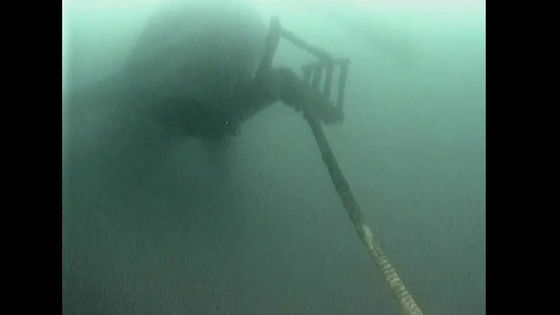Microsoft's two-year undersea data center deployment 'Project Natick' succeeds

In 2018, Microsoft conducted an experiment called ' Project Natick ' to sink an entire data center under the seabed in Scotland. The submerged data center was pulled up two years later in 2020, and Microsoft announced that Project Natick was successful. The idea of 'submerging a data center in the sea' has been announced to be excellent.
Microsoft's underwater server experiment resurfaces after two years --The Verge
In 2018, as part of Project Natick, Microsoft sank a data center 117 feet below the ocean floor in Scotland. The data center consists of 864 servers, and the total storage capacity is said to have reached 27.6 petabytes.
Microsoft is releasing a video of a webcam installed in a 27.6 petabyte submarine data center --GIGAZINE

You can check the appearance of the data center submerged in the sea by Project Natick in the following movie.
Microsoft reveals findings from Project Natick, its experimental undersea datacenter --YouTube
Submerging the entire data center on the ocean floor sounds like a strange idea, but Microsoft has conducted experiments on the assumption that submerging it on the ocean floor will 'realize a reliable and energy-efficient data center.' I am.
In the first step of the experiment, we needed to keep the submerged container out of the water and allow the computer to operate in it.

Microsoft logo on the container

On land, data centers face multiple problems, such as oxygen and humidity corrosion and temperature changes. However, a watertight environment with strict temperature control can make the problem much less. Below is a picture of a data center that was actually submerged in the sea.

Data center lifted from the sea

Microsoft pointed out that it is possible to easily deploy a data center that sinks to the seabed, such as the one used in this experiment, in large and small sizes along the coast. It also says that this type of data center will be able to provide better local access to cloud-based resources in more regions.

According to Microsoft, installing a data center on the seabed will reduce the failure rate of servers to about one-eighth. 'This is a dramatic improvement,' Microsoft said. If the data center is installed on the seabed, it will not be possible to easily repair a damaged server, but since the failure rate is very low in the first place, the failure rate is 'low' rather than the drawback of 'difficult maintenance and inspection'. It seems that it was judged that the advantage was greater.

Related Posts:






